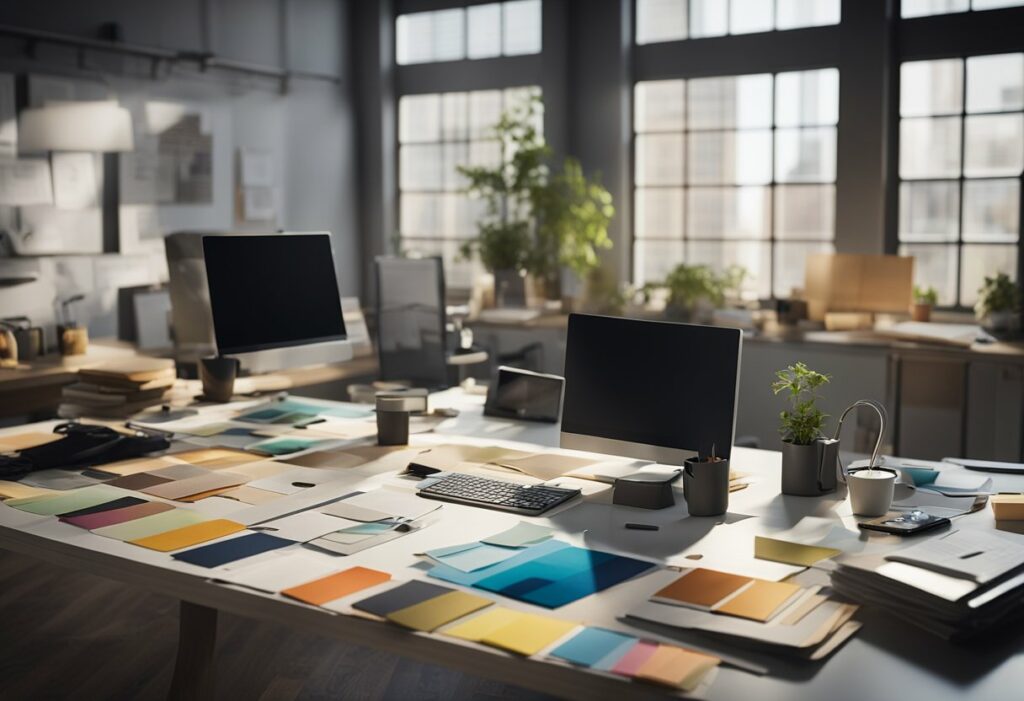Design Development Phase: The Exciting Journey of Interior Design
Design development is a crucial phase in the interior design process. This is where your vision for your space starts to take shape. It’s the time when you work with your interior designer to develop a concept that will guide the rest of the project. During this phase, you’ll refine your ideas, choose colours, materials, and finishes, and create a detailed plan for your space.
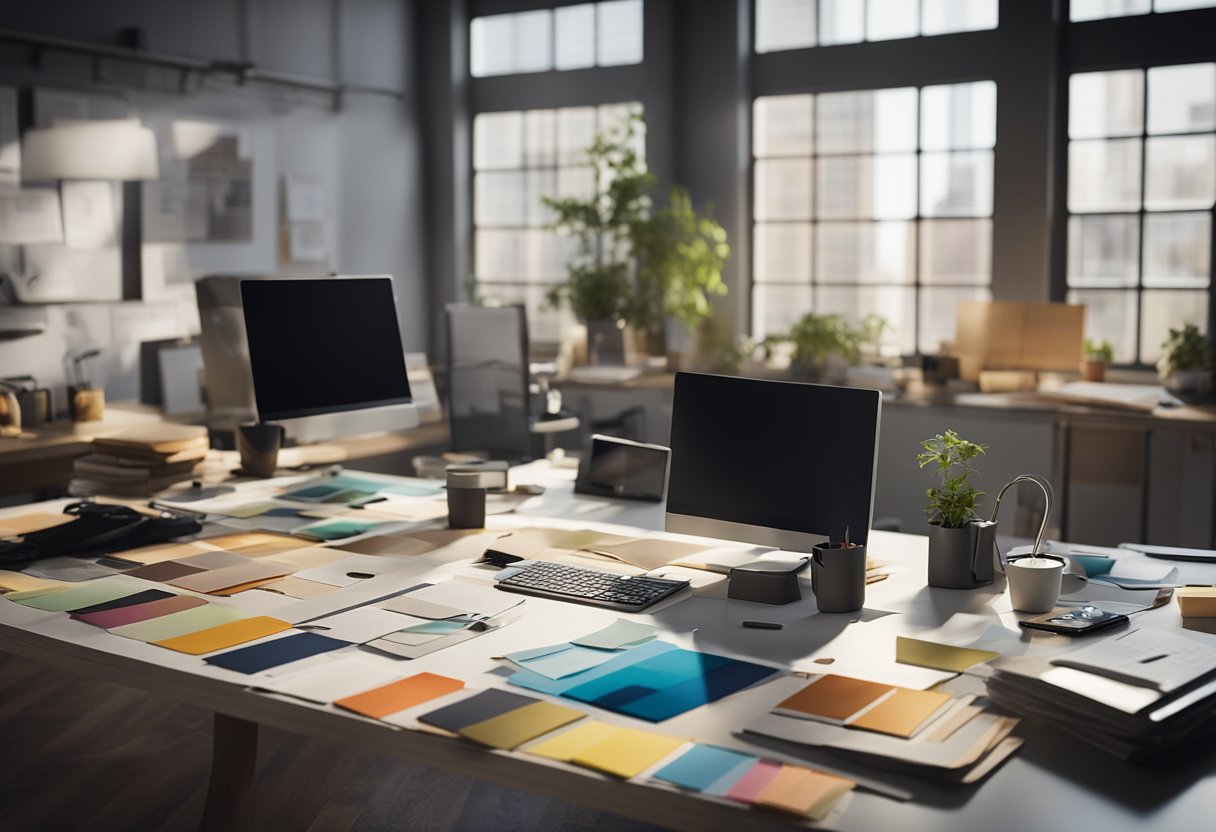
One of the essentials of design development is concept development. This is where you and your designer work together to create a vision for your space. You’ll discuss your goals, your preferences, and your budget, and your designer will use this information to create a concept that captures your vision. This concept will guide the rest of the project, so it’s important to get it right.
Once you have a concept, the next step is schematic design. This is where your designer will start to create detailed plans for your space. They’ll create sketches and drawings that show the layout of your space, and they’ll work with you to refine the design until it’s perfect. This is a collaborative process, so you’ll have plenty of opportunities to give feedback and make changes.
Key Takeaways
- Design development is a crucial phase in the interior design process that helps you refine your ideas and create a detailed plan for your space.
- Concept development is an essential part of design development that involves working with your designer to create a vision for your space.
- Schematic design is the next step in the process, where your designer will create detailed plans for your space.
Design Development Essentials
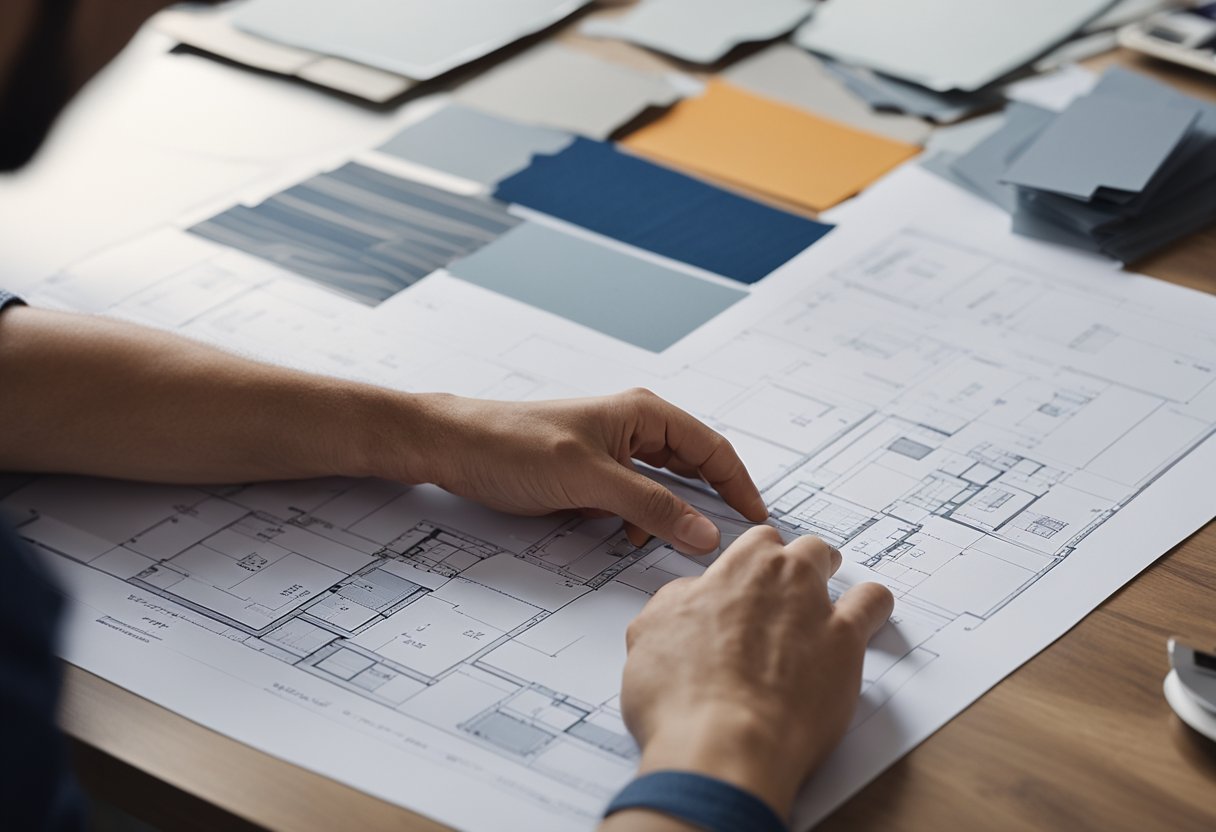
Design development is an exciting phase of the interior design process where your visions and ideas for your space start to take shape. In this phase, you work closely with your interior designer to create detailed plans that bring your project goals to life. Here are some essential elements of the design development phase:
Understanding the Design Process
The design development phase is all about taking the ideas and concepts that were established in the previous phases and turning them into detailed plans. This is where you and your designer will work together to create a cohesive design that meets your functional and aesthetic needs.
Creating Detailed Plans
During this phase, your designer will create detailed floor plans, elevations, and reflected ceiling plans that show the layout of your space, including measurements and scale. These plans will help you visualise the space and ensure that everything fits perfectly.
Materialisation of Concepts
The design development phase is also where your designer will start to select materials, finishes, furniture, fixtures, lighting, furnishings, textiles, and interior finishes. Your designer will work with you to choose the right materials and finishes that meet your aesthetic and functional requirements.
In summary, the design development phase is a crucial part of the interior design process that brings your project goals to life. By working closely with your designer, you can create detailed plans that meet your functional and aesthetic needs, and select the right materials and finishes that bring your vision to life.
Project Execution and Management
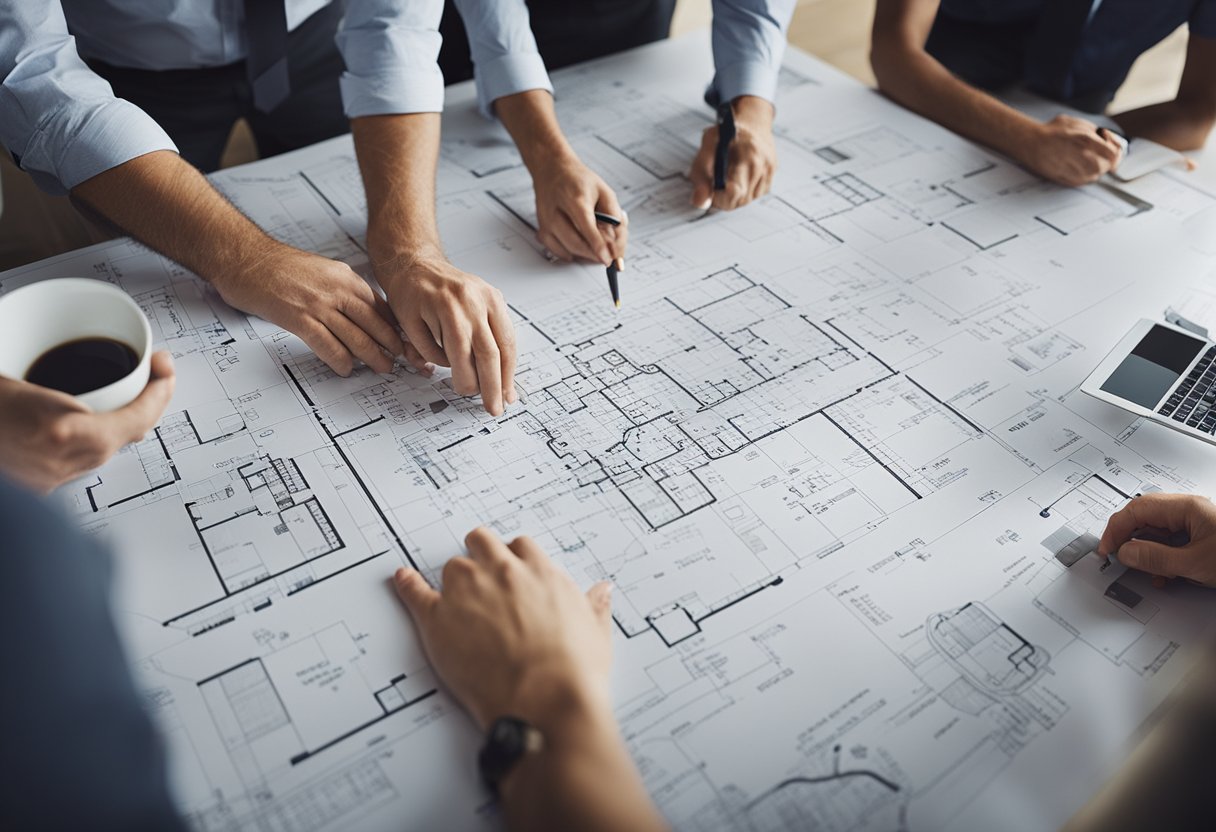
Once the design development phase is complete, it’s time to move on to the execution and management phase. This is where the project really comes to life, and you get to see your vision become a reality.
Coordinating with Professionals
During this phase, you will be coordinating with a variety of professionals, including contractors, plumbers, electricians, and mechanical and HVAC experts. It’s important to ensure that everyone is on the same page and working towards the same goals. This will help to ensure that the project stays on schedule and within budget.
Overseeing Project Phases
As the project progresses, you will need to oversee each phase to ensure that everything is going according to plan. This includes monitoring schedules, timelines, and budgets, as well as making adjustments as needed. You will also need to ensure that all deliverables are being met and that everything is being sourced and procured according to the proposal.
Finalising the Design Project
Once the construction phase is complete, it’s time to add the final touches and style the space. This includes adding any necessary finishing touches, such as artwork, accessories, and lighting. You will also need to ensure that everything is installed correctly and that the space is ready for presentation.
Overall, the project execution and management phase is an exciting time, as you get to see your design come to life. With the right experience and attention to detail, you can ensure that everything is executed according to plan, and that the end result is a space that meets all of your constraints, as well as your personal style and lifestyle.
Frequently Asked Questions
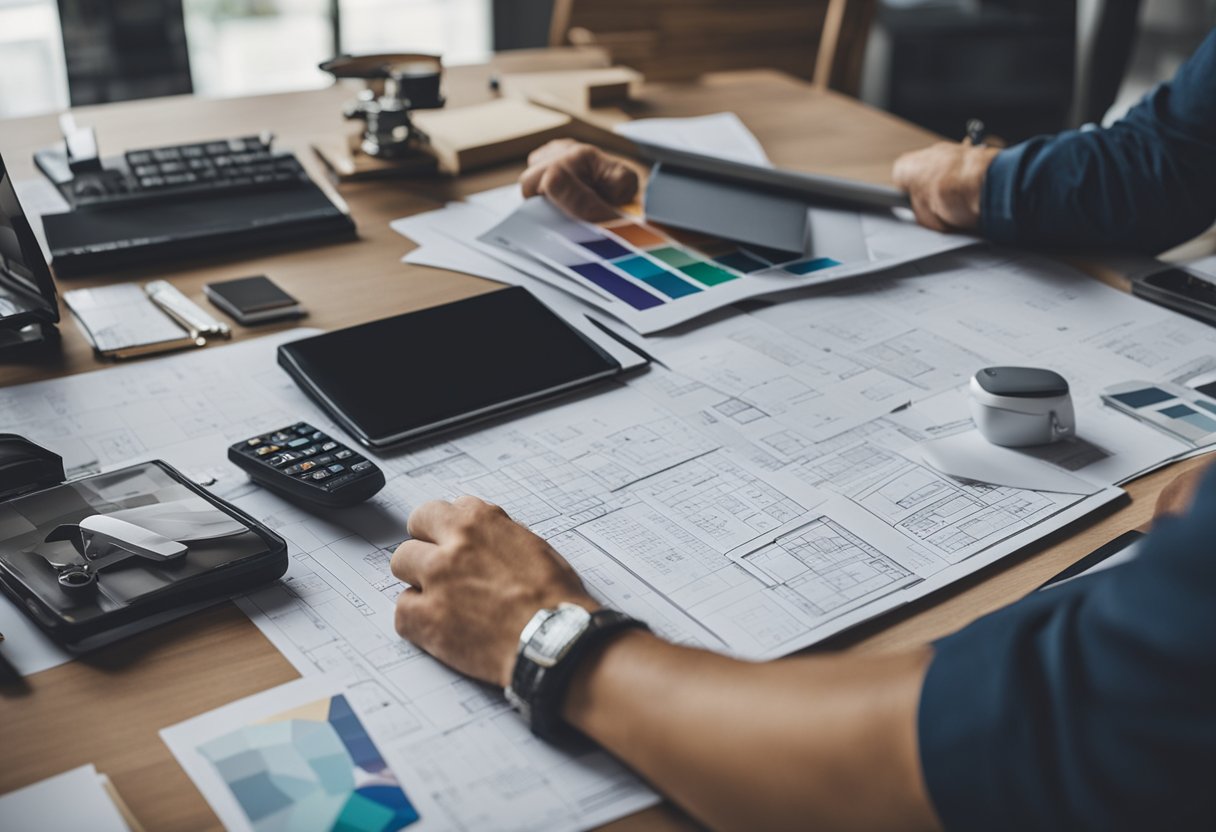
What dazzling steps are involved in the design development stage of interior design?
The design development stage of interior design involves several exciting steps. According to Studio Croft, the five most common phases of interior design are Programming, Schematic Design (SD), Design Development (DD), Construction Documentation (CD), and Construction Administration (CA). During the design development phase, the designer will focus on refining the design concept from the schematic design phase. This includes developing detailed floor plans, elevations, and 3D models to help the client visualise the final design.
How does the concept development phase spark creativity in interior design?
The concept development phase is essential to interior design as it sets the tone and direction for the entire project. According to Pro Interior Designer, this phase involves brainstorming ideas, researching, and creating a design concept that aligns with the client’s vision and goals. This phase sparks creativity in interior design by allowing the designer to explore different design ideas and concepts.
Can you outline the thrilling journey through the 5 phases of interior design?
The five phases of interior design include Programming, Schematic Design (SD), Design Development (DD), Construction Documentation (CD), and Construction Administration (CA). Each phase is essential to the overall success of the project. During the Programming phase, the designer will gather information about the client’s needs, goals, and budget. The Schematic Design phase involves creating rough sketches and floor plans. The Design Development phase refines the design concept from the Schematic Design phase. The Construction Documentation phase involves creating detailed drawings and specifications for the construction team. Finally, the Construction Administration phase involves overseeing the construction process to ensure the design is executed correctly.
What are the exhilarating stages included in the 6 phases of interior design?
According to Aleur Interiors, the six phases of interior design include Inspiration, Concept Development, Design Development, Documentation, Construction, and Installation. The Inspiration phase involves gathering ideas and inspiration for the project. The Concept Development phase involves creating a design concept that aligns with the client’s vision. The Design Development phase refines the design concept from the Concept Development phase. The Documentation phase involves creating detailed drawings and specifications for the construction team. The Construction phase involves overseeing the construction process to ensure the design is executed correctly. Finally, the Installation phase involves adding finishing touches and accessories to the space.
Could you guide me through an electrifying step-by-step interior design process checklist?
An interior design process checklist can vary depending on the project’s scope and complexity. However, The Little Design Corner outlines a seven-step workflow that includes the following stages: Initial Consultation, Concept Development, Design Development, Documentation, Construction, Installation, and Styling. During the Initial Consultation, the designer will gather information about the client’s needs, goals, and budget. The Concept Development stage involves creating a design concept that aligns with the client’s vision. The Design Development stage refines the design concept from the Concept Development stage. The Documentation stage involves creating detailed drawings and specifications for the construction team. The Construction stage involves overseeing the construction process to ensure the design is executed correctly. The Installation stage involves adding finishing touches and accessories to the space. Finally, the Styling stage involves styling the space to create a cohesive and inviting look.
What are the dynamic stages outlined in the interior design process flowchart?
An interior design process flowchart can vary depending on the project’s scope and complexity. However, SQM Architects outlines the following stages: Briefing, Concept Design, Design Development, Documentation, Tender, and Construction. The Briefing stage involves gathering information about the client’s needs, goals, and budget. The Concept Design stage involves creating a design concept that aligns with the client’s vision. The Design Development stage refines the design concept from the Concept Design stage. The Documentation stage involves creating detailed drawings and specifications for the construction team. The Tender stage involves soliciting bids from construction contractors. Finally, the Construction stage involves overseeing the construction process to ensure the design is executed correctly.

